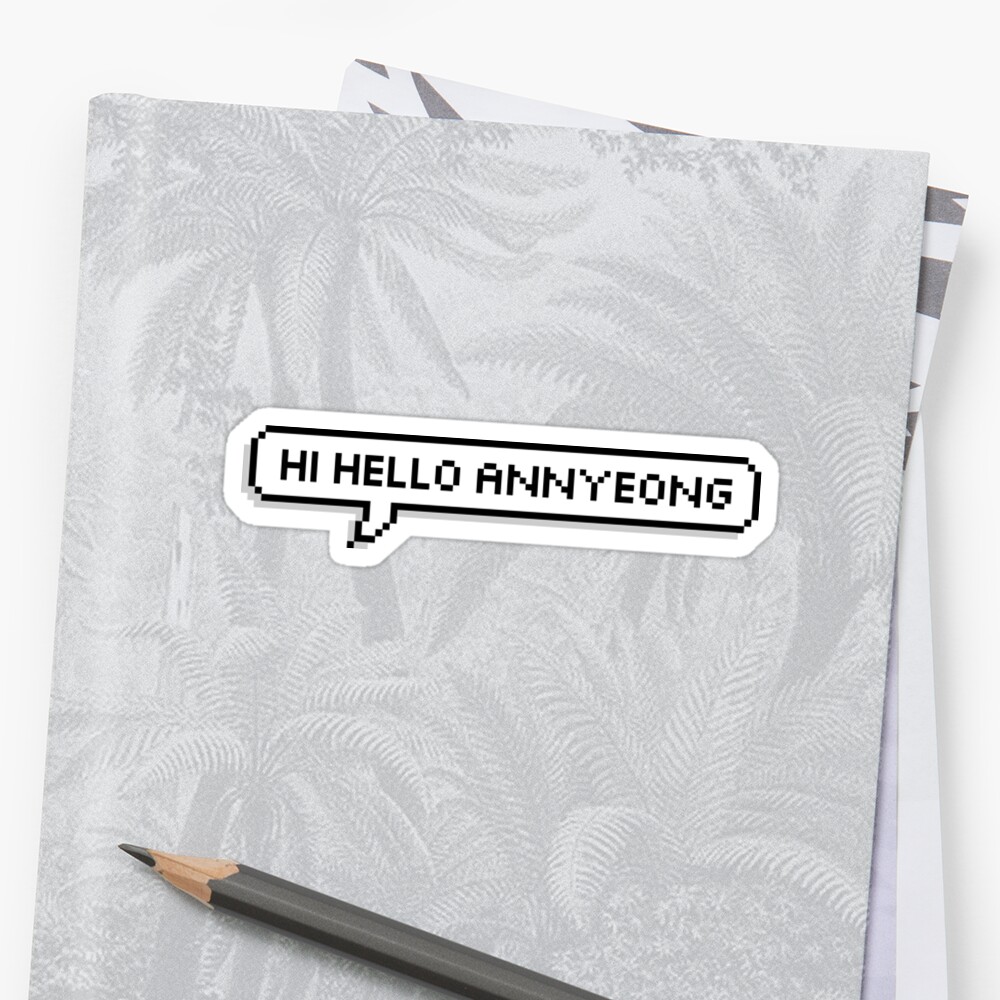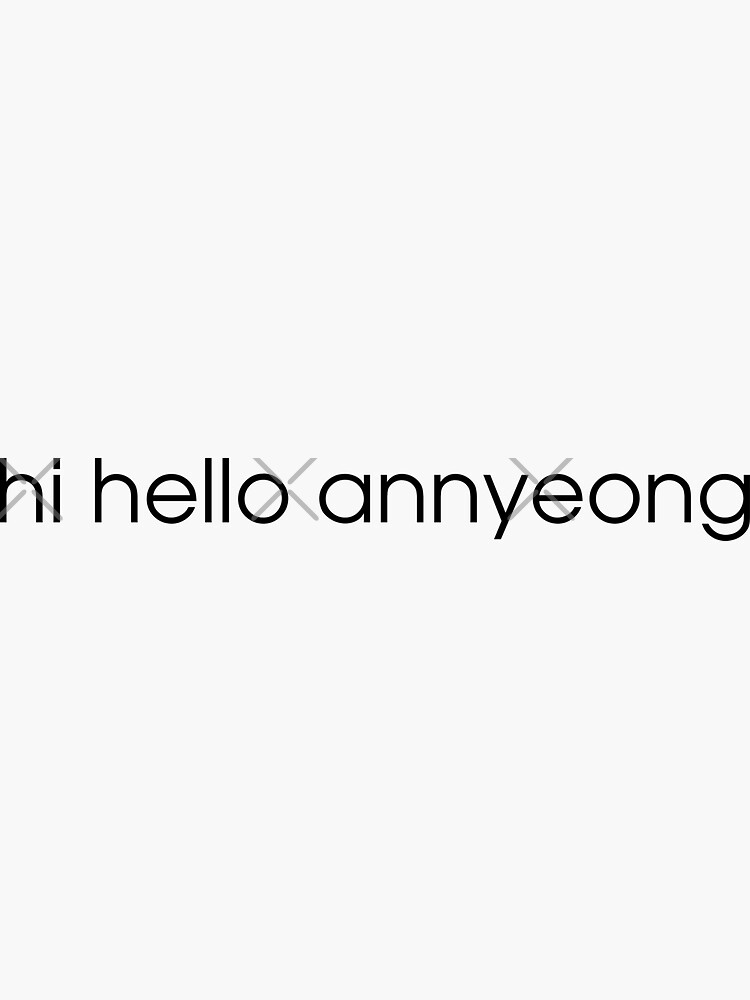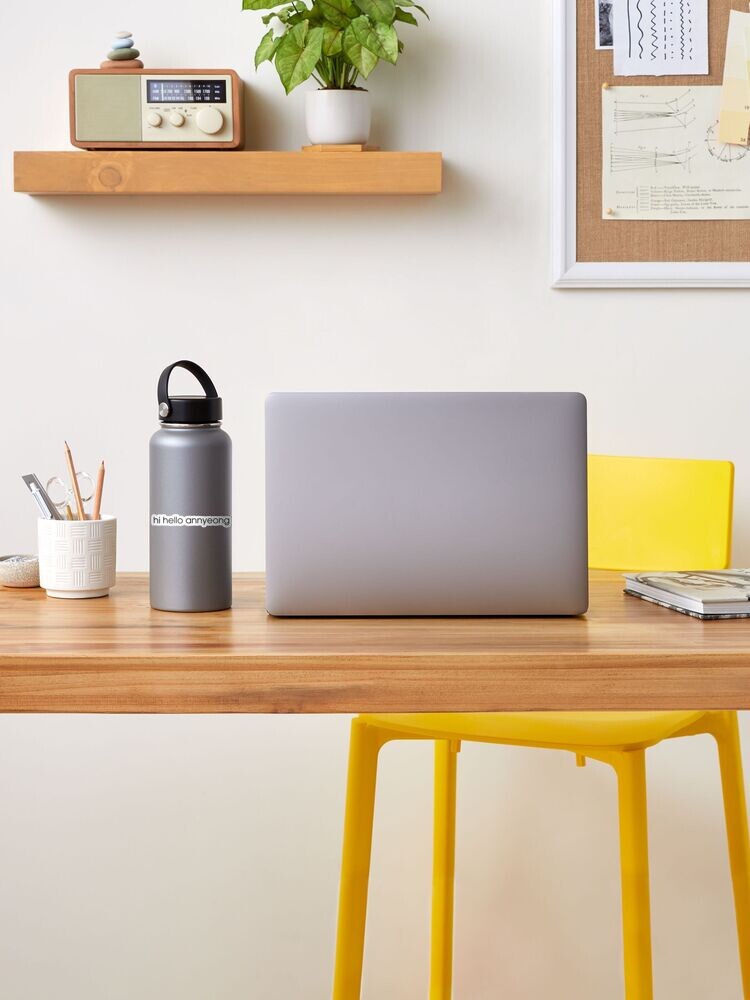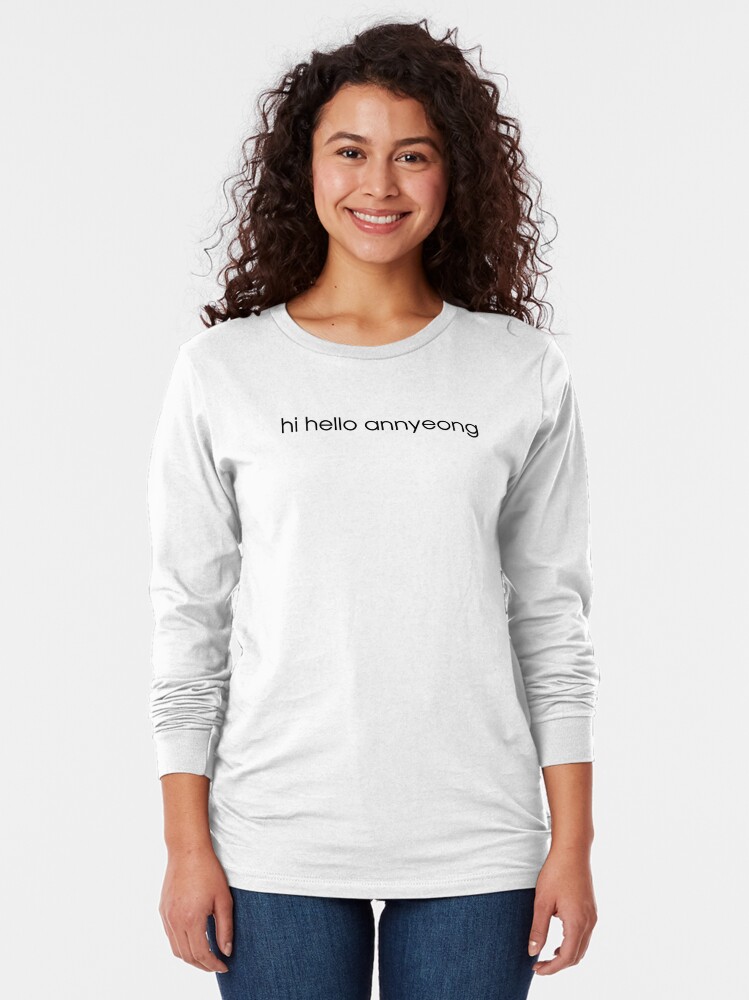
Pin de Miii Ice🔹 en Hyungwon Monsta x, Hyungwon, Chicas
The best impression is the first one, and simply saying hello in Korean or good morning can impress a romantic interest, coworker, or potential friend. 안녕하세요 (annyeong haseyo) is translated as hello in Korean language and literally means "to be at peace." but there are 3 other Korean words for hello are " formal 안녕하십니까 (annyeong hasimnikka), the informal way 안녕.

Hi . Hello . Annyeong / Twitter
In Korea, saying "hello" is a great way to show respect for and an interest in the local culture. Greeting people in their own language is a sure way to get a smile and break the ice.

"Hi Hello Annyeong" Sticker by ZeroKara Redbubble
1. Hello - 안녕하세요 [annyeong-haseyo] When you are greeted by someone, whether it be in the shops or on the street, you will hear this word. 안녕하세요 [a-nyeong-ha-se-yo] is the formal, polite way to say hello in Korean and is the most important for you to know when you are just beginning learning Korean or if you are in need of some simple travel Korean.

Annyeong! Korean Hi / Hello 안녕 Hangul Language Script Asian Sticker TeePublic
#1 안녕하세요 (annyeong haseyo) - "Hello" in Korean (formal)"Hello" in Korean literally means "to do peace/well-being". It's used as both a question and an answer almost as though asking "Are you doing well?" and replying 네, 안녕하세요 (ne, annyeong haseyo, "yes, I'm doing well").This is the most common way to say "hello" in Korean and so it's.
Hi Hello Annyeong Annyeong Posters and Art Prints TeePublic
An·nyong / An·nyong·ha·se·yo안녕 / 안녕하세요. These are the standard informal ways to greet someone. Annyonghaseyo is the standard greeting in South Korea due to the general informality in the language. Annyeong is limited to use between close friends and is a very casual way to say hello in Korean.

"hi hello annyeong" Sticker for Sale by riverspond Redbubble
1. Hello // 안녕하세요 (annyeonghaseyo) Listen and practise: an-nyeong-ha-se-yo 1 annyeonghaseyo The most common greeting when you meet someone and everyone will welcome you warmly. It is used by almost all Koreans when they see each other, and you'll sound like one of them.

Annyeong! Korean Hi / Hello 안녕 Hangul Language Script Asian Mask TeePublic AU
안녕 (annyeong) is one of the most common words you'll hear if not the first Korean word you'll learn. You'll notice that 안녕 (annyeong) is used on different occasions..more.more What's the.

Annyeong! Korean Hi / Hello 안녕 Hangul Language Script Asian Autocollant TeePublic FR
Greeting means 인사 in the Korean language. 안녕하세요! (Anyoung haseyo!) is a term for Hello/Good morning/Good afternoon/Good evening. And 안녕! Anyoung! means Hello / Hi (informal). 안녕하십니까 is much respectful than 안녕하세요! but both give the same meaning.

🐻hi 🐻hello 🐻annyeong detodo De Todo amreading books wattpad Wattpad
1) Hi - annyeong. Annyeong is a SUPER versatile word. First, it's casual. But, it means "hi, hello, good morning, good evening, good day" and even "bye!". Basically you can use it to say Hello in Korean at any time of day. Hi. 안녕. annyeong. Also, you can listen to this easy Korean Lesson by KoreanClass101.com that I mentioned above.

Korean Annyeong (Hello in Korean) white text 안녕하세요! Annyeong Sticker TeePublic
Annyeong (안녕) is a casual, informal way of saying "Hello." It is typically used among close friends and not people you have just met. There is no need to bow when you are greeting someone informally, a simple wave will do. Annyeong (안녕) can also be used to say "Goodbye." Jalgayo / Jalga (잘가요 / 잘가) - Informal

SHOWNU HI HELLO ANNYEONG 10 MINUTE LOOP YouTube
The 안녕 (an-nyeong)-part means "peace" or "health" (there are many ways to say "peace" but only 안녕 is used in greetings), and while -하세요 (ha-se-yo) has a grammatical definition, 안녕하세요 is an expression and because of that, it's not a good example to use when explaining grammar. It DOES, however, make it polite, and not too formal.

"Jungwoo Hi! Hello! Annyeong! Graphic NCT Jungwoo" Sticker for Sale by THEDROPZONE Redbubble
Saying hello is like opening the door to a whole new world of connections and cultural experiences while you're traveling. Whether you're planning a trip to South Korea, eager to communicate with Korean friends, or simply captivated by the language, learning how to say "hello" in Korean is the first step.

hi hello annyeong on Twitter
안녕 (annyeong) = hi/hey/hello (casual, informal) An intimate greeting for close friends! Only spoken to people the same age or younger than you. Note: This is mainly for a younger generation (locals over 40 would rarely use 안녕).. Interestingly, the standard/polite word for hello: 안녕하세요 (annyeong haseyo) can be used to mean.
Stream hi_hello_annyeong music Listen to songs, albums, playlists for free on SoundCloud
Using Hello in Conversations To effectively use 'Hello' in Korean, it's crucial to understand the context. Here are some practical conversation examples: Greeting a Neighbor: A: 안녕하세요! (Annyeonghaseyo!) - 'Hello!' B: 안녕하세요! 어떻게 지내세요? (Annyeonghaseyo! Eotteoke jinaeseyo?) - 'Hello! How are you?'

"hi hello annyeong" Sticker for Sale by riverspond Redbubble
"Hi" / "Hello" (casual): 안녕 ( annyeong) "Good day" / "Hello" (formal): 녕하십니까 ( annyeong hasimnikka) "Hello" when answering the phone: 여보세요 ( yeoboseyo) "Good morning": 좋은아침이에요 ( joeun achimieyo) "Long time no see" (polite): 오랜만이에요 ( oraenmanieyo) "Nice to meet you" (formal): 만나서 반갑습니다 ( mannaseo bangapseumnida) "What's up?":

"hi hello annyeong" Tshirt by riverspond Redbubble
Generally, there are three ways to say " Hello" in Korean: The formal form 안녕하십니까 (annyeonghasimnikka), the standard way 안녕하세요 (annyeonghaseyo), and the informal way 안녕 (annyeong). When it comes to Korean greetings, it's best to use the standard way in most situations because you can use it for almost everyone.